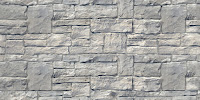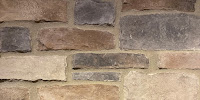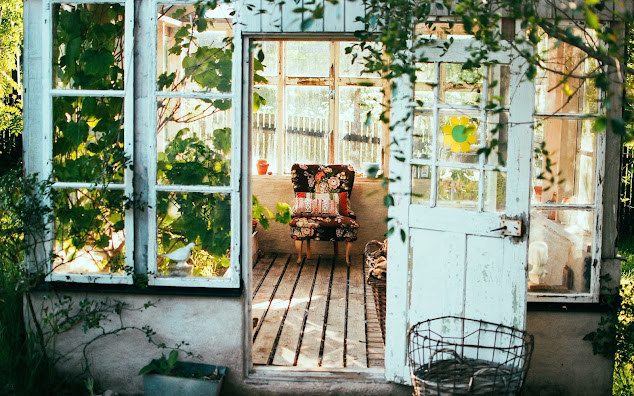How to make our own garden paths - materials and DIY tips. Part 2 - DIY tips
Planning
Before we can begin to construct the garden paths on our property, it is necessary that we have completed the construction of sewers, water lines, electrical routes and in general everything that would require us to dig up the already finished paths.
When planning, it is important to take into account the features of the terrain, the vegetation, the quantity and location of the buildings, the style of the facades and other architectural elements.
The first step is to schematically depict the house, other buildings, as well as the other points of interest such as small architectural forms on the site, to which an approach is required. When creating this drawing, it is important to keep the scale correct. Then we design first the layout of the most necessary and basic garden paths, and then the more secondary ones.
Having done this, we can now calculate the total area of the paths and calculate the cost of the necessary materials.
Preparation of the base
The next step after planning the layout of the garden paths is to mark them on the spot. This is usually done by driving small stakes into the ground and stretching a string between them. Usually, before proceeding with the installation and construction work, the top layer of soil is removed. Thus, the future path will not rise much above the ground and will allow us to create a harmonious landscape design, and it will also not interfere with mowing the lawn. The section should be a little wider, since it is better to enclose the path curbs of stone or concrete. This will give the structure durability.
When preparing the base, it is important to observe the following rules:
The layer of soil to be removed is approximately 15-20 cm (6-8 inches). Be sure to control this with a ruler so that it is the same depth along the entire path.
Boards are installed along the perimeter, which in this case will serve as formwork. We do not need formwork if we are going to use ready-made curbs of stone or concrete. We need to fix them firmly in place.
A layer of gravel, crushed stone or sand is placed on the bottom and rammed. To save money, construction debris can also be used - fragments of brick, slate, chipped gas silicate slabs, and so on. The thickness of the layer should be about 5-10 cm (2-4 inches).
The next layer is geotextile. It holds the shape of the top sand cushion and also prevents plant roots from germinating and destroying the garden path.
We cover the geotextile with sand so that it is slightly above the level of the surrounding terrain. It is important to align it very well.
When the basis for the future path is ready, we can proceed with the installation of the decorative material.
The way of paving the garden path depends on the material we have chosen. For example, for natural stone slabs, paving tiles and bricks, you will need a mallet with a rubber striker that will not damage the material. The individual pieces are driven into the sand to the middle of their thickness. Installation starts from the curb. The joints are filled with sand, which is distributed evenly with a stiff brush. The residue is removed. We can also fill the joints with cement mortar instead of sand.
For a country-style path made of wood circles, we need well-dried circles of a hard species of wood. The diameter of the circles can be different, but the more options, the better. This will result in a tight fit without large gaps. The height should be twice the depth of the pit without the sand cushion. We need to treat the wood with the appropriate anti-rot, anti-mould and anti-insect solutions, if it is not pre-prepared.
Since the wood circles are difficult to hammer into the sand due to their diameter, the sand cushion is formed along with the laying of the logs. We pour a little sand at the end of the trench, then put a row of wooden circles and firmly press them down. We fill the joints with more sand. And so we put them row by row.
River pebbles mosaic is also a great option for decorating paths on the site. Such details are very small, so we will have to be patient. First of all, we should sort the stones by size and color, this will help determine the styling pattern, as well as speed up the layout process. We will need a rubber mallet, water, a sponge and a leveler.
For our convenience we can sketch a “drawing” directly on the surface of an already prepared sand cushion. After the preparatory work, we can proceed with the installation. First, we make a thick cement mixture, then put a little of it on the base and start arranging the pebbles. It is important to work quickly so that the cement mixture does not dry out. We arrange the small stones so that there is a minimum distance between them. We strive to constantly control that everything is even, as with so many small stones it is easy to get unevenness. We use the same rubber mallet as for stone slabs. When a section is ready, we pour some water - this will wash away any staining with cement solution and strengthen the solder between the pebbles.
When creating a concrete garden path we prepare everything as written above - excavation, rammed gravel, geotextile, leveled sand. We pour the concrete mixture on the base and level it. We can diversify the surface with different pigments in the mixture or with different prints to resemble natural stone or other forms.
Photo by Linda Gerbec on Unsplash & Photo by Ellen Tanner on Unsplash
Canyon Stone Canada offers the largest portfolio of specialty masonry products in the country. You can find more info on selected products, by following the links below:















Comments
Post a Comment